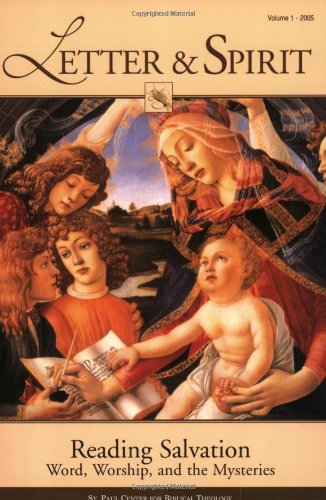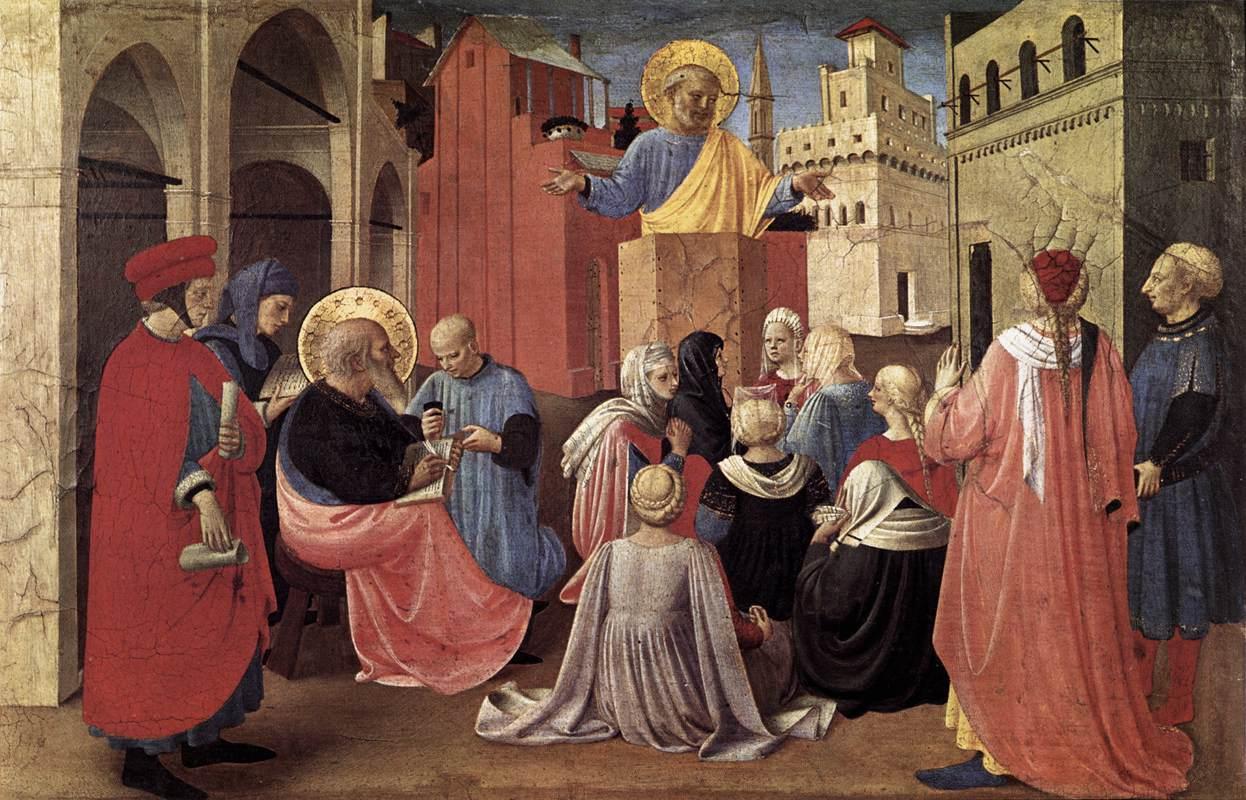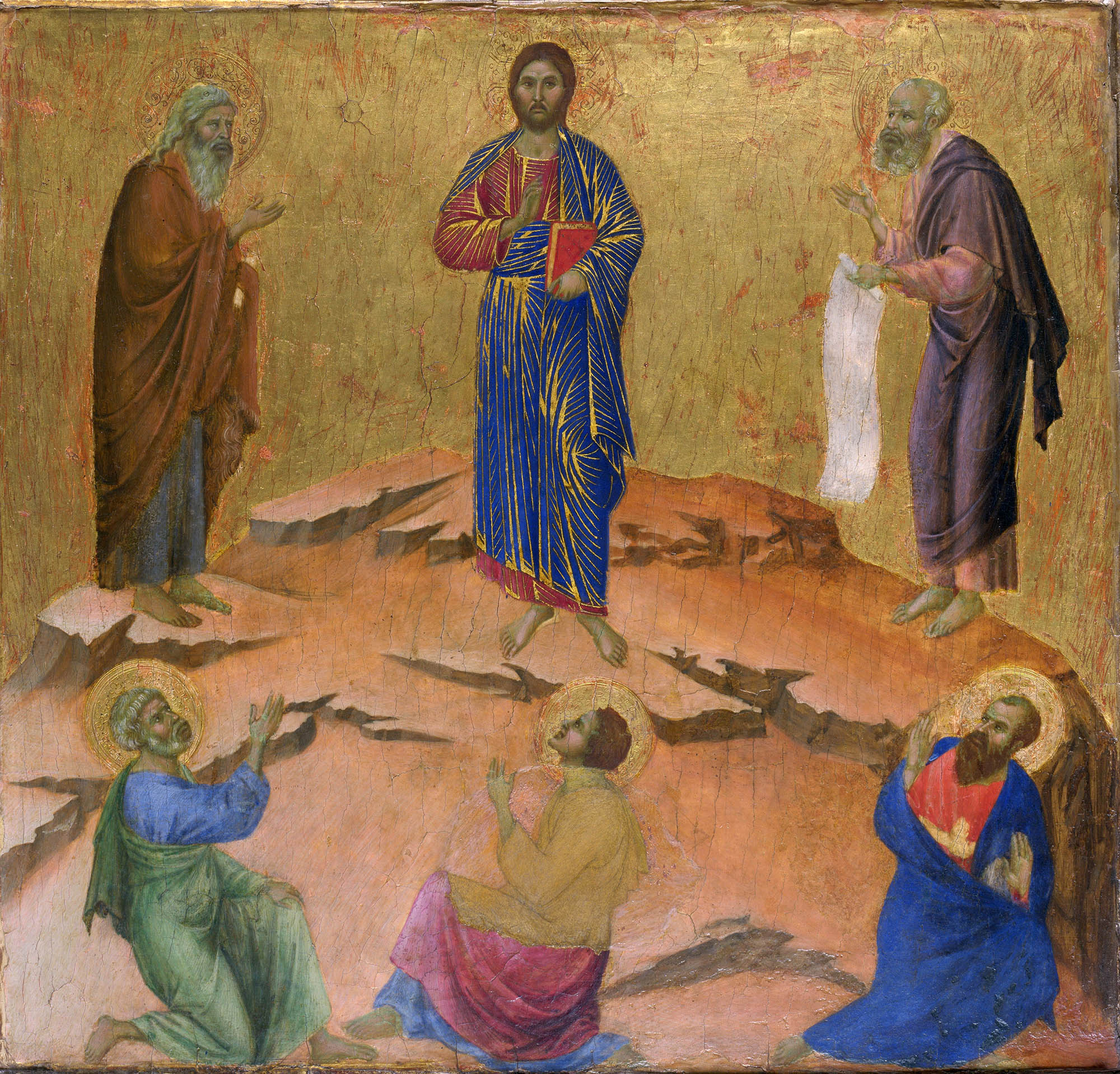Scott Hahn, Editor – David Scott, Managing Editor
View or Purchase from Amazon.com
— With this new journal we hope to foster a deeper conversation about the Bible—what it is and where it comes from; how we should read it; and what claim it should make on our lives, on the teaching and practice of the Church, on the world we live in.
Editor’s Introduction
Welcome to Letter & Spirit. With this new journal we hope to foster a deeper conversation about the Bible—what it is and where it comes from; how we should read it; and what claim it should make on our lives, on the teaching and practice of the Church, on the world we live in.
We realize that wildly divergent answers to these questions have long been afoot in our churches, seminaries, and academies. Some have gone so far as to describe a “crisis” in contemporary understanding of the Bible. Indeed, we would suggest that a failure to think straight about the Bible risks confounding our worship, confusing our doctrine and morals, and rendering uncertain the Church’s witness to the culture and to other believers.
That said, the readers of this journal deserve to know where we are coming from—our starting points, the prior judgments and assumptions we bring to this conversation. Without trying to put too fine a point on it, we read the Bible from the heart of the Church. That means we read the Bible as the Church hands it on—as Scripture, as a divine Word spoken by God to a faith community that acknowledges this Word as authoritative and normative for its life and worship. We read, then, from within a tradition that for more than two millennia has listened to and contemplated God’s Word—preaching, praying, and interpreting that Word in liturgy, doctrines, and devotions, and applying its wisdom in countless pastoral settings.
The Bible is an ecclesial and liturgical document. As we see it, this is a statement of historical fact, not an article of faith. The Bible exists because the apostolic Church composed, collected, and preserved this Word, even to the shedding of blood by its martyrs. The Church continues to proffer this Word as essential for making disciples of the God revealed in its pages and for worshipping that God, revealed finally and fully by Jesus Christ (John 20:31; 1 Thess. 2:13).
The Word of God was proclaimed before it was written, heard before it was read. The site of this proclamation and hearing, since the first Easter night, has been the divine liturgy of the Church (Luke 24:13-49). The earliest Scriptures were composed to be read and interpreted in the Eucharistic assembly. And Scripture from the start has always been proclaimed and interpreted in order to anticipate a liturgical act—baptism or the Eucharist, for instance—by which the hearer of the Word is granted entry into the salvation promised in the Scripture. There would be no Bible without the liturgy and there could be no liturgy without the Bible.
The culture of the Church that gives us the Bible is a biblical culture. The words of Scripture quite literally form the basis for the Church’s confessions of faith. Its art, music, and architecture are expressed in words and images drawn from the sacred pages. The Church’s dogmas and doctrines are expressed in scriptural language and are themselves authoritative interpretations of the Scriptures. The “mysteries” of the faith, the Church’s sacraments, are celebrated through biblical signs of water, oil, bread, and wine. As God addresses the Church in the human language of Scripture, in its liturgy the Church responds to his Word in prayers, songs, and vows drawn from those same Scriptures.
Again, these are statements of historical fact, not articles of faith. Much of what has led to the crisis in contemporary biblical scholarship could be overcome by acknowledging these historical realities. One certainly does not have to confess what the Church confesses, nor does one have to believe what the Church claims about the Bible, in order to read, study, or interpret it. But if we are seeking the true meaning of Scripture as it is written, and not merely to advance fanciful or private judgments, we cannot divorce Scripture from the ecclesial and liturgical culture in which it comes to us.
Reading Salvation—Word, Worship, and Mystery
What we are about and what we are up to in Letter & Spirit is perhaps best explained by the selections we present in our inaugural issue. Our theme for this issue tries to capture something of the enormity of what the Church claims for Scripture. In the Scriptures, according to ancient understanding, is narrated the history of the world’s salvation—a history that each believer enters into through the sacraments, also known as the “mysteries.” In this sense, to read Scripture is to be “reading salvation.” In this reading we encounter the living Word of God who desires to lead all humankind to worship and communion in the mystery of his own divine life.
Our issue examines the many facets of this reading of salvation. In “Allegory and the Interpretation of the Old Testament in the 21st Century,” Robert Louis Wilken looks at the Church’s oldest and most enduring approach to biblical interpretation and shows the necessity of allegory for reading the Bible—not as an ancient document, but as the living voice of the living God. In a unique treatment of how certain psalms are interpreted in the Church’s daily liturgy, Wilken illustrates how allegory helps the Church read the Hebrew Scriptures in light of the “prodigious newness” of the incarnation, of the Word of God becoming flesh. Wilken notes that this traditional Christian way of reading Scripture requires “more than what is considered interpretation today.” Indeed, in the academy and in many parts of the Church, allegory has been rejected in favor of strictly historical and literary approaches to the text.
As does Wilken, our second contributor, James Swetnam, S.J., questions whether it is possible to understand the historical and literary meaning of the biblical text without what he calls a “hermeneutic of faith.” Swetnam’s “The Sacrifice of Isaac in Genesis and Hebrews” is a penetrating study of a key and controversial biblical text—God’s demand that Abraham offer his beloved son as a sacrifice (Gen. 22). Swetnam observes how both the original account and the interpretation of that account in the New Testament presume that readers share a certain faith perspective. He argues that in order to interpret these Scriptures as they were written—as historical and literary texts—one must acknowledge that their literal and historical meaning is intended to convey a religious truth. The interpreter must then, he says, take seriously the faith presumptions of the biblical authors. In this case, that means exploring not only the notions of covenant and sacrifice that underlie the Genesis text, but also giving due consideration to both authors’ underlying core belief in the trustworthiness of God’s promises and his power to raise the dead.
Brant Pitre also explores the interpretation of the Old Testament in the New in his contribution, “The ‘Ransom for Many,’ the New Exodus, and the End of the Exile.” His paper exemplifies Letter & Spirit’s commitment to using the tools of historical and literary criticism to explicate the essentially religious meaning of the biblical text. Through careful consideration of the Old Testament background, Pitre demonstrates convincingly that Christ’s “ransom” is presented in Mark’s Gospel as more than the deliverance of individuals from bondage to sin. The “ransom” also evokes Israel’s expectation for a new exodus that, like the first exodus, would atone for the people’s sins, restore the people from exile, and establish a kingdom in the promised land. Pitre breaks new exegetical ground in this piece and sheds new light on the ecclesial and corporate dimensions of the paschal mystery.
Christian liturgy, born in the Last Supper, from the start was viewed by the Church in terms of the exodus and the celebration of a new “Passover” (1 Cor. 5:7; 10:1-4). In her contribution, “Memorial and Typology in Jewish and Christian Liturgy,” Sofia Cavalletti explores the influence of the synagogue on the early Church. She shows how the portrait of Jesus in the gospels—particularly in the Gospel of John—is shaped by a kind of “literary dialogue” with the scriptural texts read in the great Jewish feasts. She argues that from the synagogue the Church also inherited its understanding of how God’s saving words and deeds are to be grasped typologically in the reading of Scripture, and how the promises of salvation are experienced and realized in the liturgy.
These themes are further developed in “The Word of God in the Liturgy of the New Covenant,” the contribution of Jeremy Driscoll, O.S.B. Proclaimed in the Church’s liturgy, Scripture is far more than a written account of remarkable deeds done long ago. He notes how even the order of readings in the Eucharistic celebration charts the history of salvation—from the revelation of the old covenant to the revelation of the new. At the center of this history is the “event” of Christ, the entrance of the living God into human history. In the liturgy, the promise of that event is delivered anew to every believer. In Driscoll’s words: “We see in the liturgy, the final accomplishment and actualization of God’s will for the world, the meaning of salvation history—that we have access to the Father through the Son in the Holy Spirit.”
The final article in this inaugural issue, “Worship in the Word” by Scott W. Hahn, takes a panoramic look at the story of salvation that unfolds in the pages of Scripture. Hahn sees what he describes as a liturgical trajectory and liturgical teleology in this history. By that he means that Scripture, read canonically from start to finish, presents a liturgical reason and purpose and “destiny” for the world and the human person. This scriptural vision, he contends, continues in the Church’s liturgy, where each believer is made a part of biblical salvation history. As Driscoll does, Hahn reminds us that Scripture is written with the liturgy in view, that in the liturgy the purpose of Scripture is fulfilled—men and women enter into communion with God through worship expressed as a sacrifice of praise.
We also include in this issue two important shorter pieces highlighting the enduring legacy of two intellectual pioneers in biblical theology—St. Thomas Aquinas and Henri de Lubac, S.J. Arguing that Thomas should be a model for exegetes and theologians today, Christopher T. Baglow offers a line-by-line study of Thomas’s method in reading the literal sense of the crucial “bread of life” discourse in John’s Gospel. Marcellino D’Ambrosio reminds us of de Lubac’s recovery from the ancient Church—that the spiritual interpretation of Scripture is not only essential to any authentic Christian exegesis, but is also “at the heart of Christian faith itself.”
We round out our issue by sounding the voices of the Church’s living tradition. In excerpts specially selected and edited for Letter & Spirit, we hear from Hugh of St. Victor (d. 1141), who outlines the classical Christian approach to the Bible, teaching that all interpretation is founded on the literal, historical meaning of the text. F. X. Durrwell, C.Ss.R, in a text written in the 1960s, considers the ancient teaching that Scripture, like the sacraments, brings us into contact with the “Word of salvation in the redeeming Christ.” Finally, Augustin Cardinal Bea, S.J., (1881-1968) provides a careful and authoritative reading of Catholic teaching on the nature and truth of sacred Scripture.
The Letter & Spirit Project
In the century just ended, enormous strides were made in studying the historical and literary contexts of the scriptural texts. This has greatly enhanced our understanding of Scripture. We believe the task for the century ahead is to join the scientific study of Scripture’s literary and historical meaning to an equally vital recovery of Scripture’s ecclesial and liturgical sense—that is, how these texts are used and interpreted in the “today” of the Church’s living tradition.
Such a task is an adventure of the highest intellectual and spiritual order. That is what makes biblical scholarship so exciting, something worth devoting all our hearts, minds, and strength to. That is the sense of excitement that animates Letter & Spirit and the St. Paul Center for Biblical Theology which publishes it. The Center is a nonprofit research and educational institute that aims to advance the study of the sacred page at every level, from beginning students of Scripture, to seminarians, pastors, and priests. This journal appears as part of the Center’s Letter & Spirit Project, which publishes dissertations and other scholarly studies of important themes in Scripture from literary, historical, and theological perspectives.
The St. Paul Center is guided by the belief that a renewal of biblical studies is an enterprise of urgent practical necessity. A primary symptom of the current “crisis” is that biblical scholarship has become a specialized discipline within the academy—far removed from and little concerned with the needs of pastors, seminarians, and ordinary believers. The result has not been a happy one, for either biblical scholarship or the Church.
Reading the Bible from the heart of the Church means, finally, bringing the interpretation and study of Scripture back home. We take heart that the very word for the Bible’s original and rightful home—liturgy (from the Greek leitourgia)—means “public work.” Classical authors used this word to categorize the labor of street sweepers and bureaucrats. The Church uses liturgy to describe the service by which the saving truths and great works of God recorded in Scripture are carried out in the here and now, making believers a part of the salvation history told in its pages.
There can be, then, nothing elitist or obscurantist about our study of Scripture. Biblical scholarship must serve Scripture’s proclamation and its faithful reception. It must be in service to the ministry of the new covenant, whereby the written text becomes living Word, whereby the letter on the page becomes life-giving Spirit.
Such are our starting points and presumptions. And these are some of the things we hope to talk about in the pages of Letter & Spirit. We welcome you to join us in the conversation.



